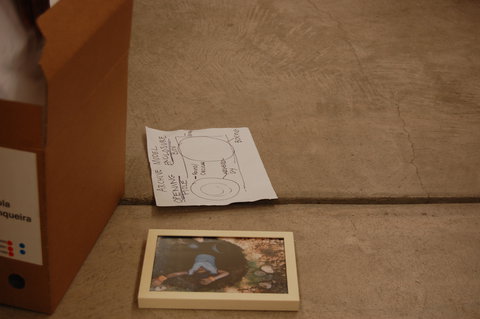
More so than other art forms, performance art is disadvantaged by the fact that it cannot be transmitted without consideration of artefacts and so does not become inscribed in history. Our investigation looks at documentary artefacts and their potential for transmission and representation as well as methods and strategies of transcription by means of scientific and artistic practices.
First, the terminology must be clarified: transmitting [Tradierung] is used not in the sense of handing down tradition, which is often mistakenly understood as a product of static memory. Sigrid Schade and Silke Wenk define the term Tradierung in terms of allowing cultural processes of memory-building to be examined via performative practices and their agents. With Judith Butler, they argue that performative practices of transmission are always based on practices of repetition, and repetition means that a shift or deviation from the original model takes place, whether it is intended or not.[1] We use the terms ‘transmission’ and ‘transcription’ synonymously on the premise that transmission always constitutes a form of (intentional or coincidental) transcription. By transcription [Weiterschreibung], as well as the production of artefacts, we understand various methods such as re-enactments, re-performances and other strategies of appropriation in artistic formats, which can all be classified as ‘transmissions’. These methods generate different forms and levels of transmission intensity: from historical faithfulness to the ‘original’ in re-enactment to interpretative translation in a re-performance and even re-writing or transforming in an artistic work. We classify transcriptions as instances in which the element of alteration or deviation is recognisable, hence also artefacts. By the term reinscribing [Überschreibung] in the sense of a palimpsest[2], on the other hand, we mean a clear eclipsing of an intentional or specific aspect of a work. Here, a specifically constituent element of a performance – such as a radical idea in a specific historical context, for example – is no longer intact in an artefact or transcription but evokes a completely different experience.
[1] Cf. Schade, Sigrid / Wenk, Silke, Studien zur visuellen Kultur. Einführung in eine transdisziplinäres Forschungsfeld, transcript, Bielefeld 2011, pp. 121-124.
[2] A palimpsest (palin ‘again’ + psēstos ‘rubbed smooth’) is literally an ancient or medieval parchment on which writing has been applied over earlier writing which has been erased by scraping or washing.